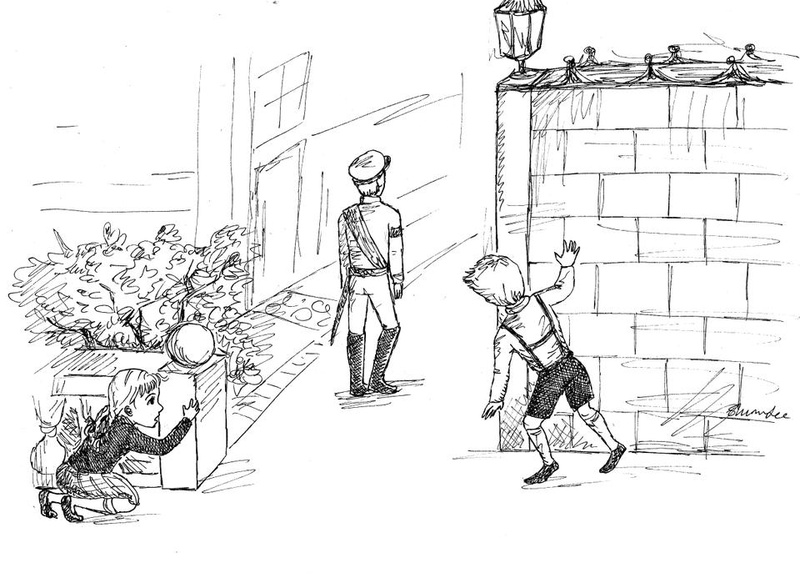Austrian-born Gregor von Rezzori‘s 1966 autobiographical novel, “An Ermine in Czernopol,” has only been translated into English this year, but due to his relative obscurity, reviews will no doubt focus on the work’s context. The novel, which focuses on von Rezzori’s childhood in the titular city, located in the “godforsaken southeastern part of Europe,” will most likely be compared to Günter Grass’s “The Tin Drum.” It may also garner comparisons to the work of Thomas Pynchon, an author who shares von Rezzori’s penchant for oddball characters, fragmented storylines, and cultural arcana. Perhaps it will even be recognized as an antecedent to Hugo Claus’s 1983 work “The Sorrow of Belgium,” another novel about growing up in dramatic historical times.
Yet all of these comparisons would be somewhat misleading, because “An Ermine in Czernopol” is peculiar and unique. If novels were judged only by their evocation of place, it would surely rank as one of the finest ever written. It is a spectacular recreation of the world von Rezzori experienced as a youth. But it is little more than that: the work’s overwhelming focus on its setting, combined with a curious emotional distance, creates a book that functions less as a novel than as a travel guide to the city of Czernopol, complete with relevant historical anecdotes.
This pronounced emphasis on Czernopol itself is the work’s greatest strength as well as its worst weakness. When von Rezzori is simply describing the city, the novel works. Near the end of the book, he relates his impressions of the sounds of Czernopol. “The distant stamping of the musicians on the dance floors in the outlying districts,” he writes, “drifting on the wind, as they filled the tedious emptiness of a Sunday afternoon.” Here, as is often the case, his prose is fluid and confident. Yet in general, the novel’s descriptions of setting are maddeningly overwhelming, and all its other elements are there simply to serve the atmosphere. Certain characters are developed only so that von Rezzori can explain how they represent the spirit of Czernopol. The central narrative––the misadventures of a Hungarian military major named Nikolaus Tildy––is completely subjugated to setting; it has no broader significance except as an excuse for von Rezzori to rhapsodize about the city. Such unrelenting focus on the relationship between character and place eventually becomes tiresome.
These wearying aspects are compounded by the book’s distinctive narrative structure. As the epigraph, taken from the Greek text “Physiologus,” states, “the ermine will die should her coat become soiled,” and Tildy, the metaphorical ermine, shares that fatal sense of pride. His tribulations, which form the closest thing the novel has to a narrative arc, are set in motion by his challenging a native of Czernopol to a duel. At the same time, the reader is treated to numerous scenes taken from von Rezzori’s youth; some are seen through his eyes, and some are described to him by others. Long stretches of the novel are dedicated to the retelling of events by family friend and prefect Herr Tarangolian, von Rezzori’s tutor Herr Alexianu, and his uncle Sergei, among others.
Due to these disparate elements, the novel’s fragmented structure never comes together. Indeed, it can most accurately be described as a series of anecdotes. On one level, this is a sound choice: subjecting von Rezzori’s memories to a more conventional narrative structure would have detracted from the book’s documentarian project. Yet on an individual level, the unconventional structure is misguided. This picaresque structure makes the relationships portrayed seem trivial, and creates emotional distance both from von Rezzori and from Czernopol. He repeatedly tells us that he greatly admires Tildy, but illustrates that by devoting a page to the major’s clothing.
Other elements of the book are even more confusing emotionally. For most of the novel, the narrator discusses little besides a bizarre fixation with Major Tildy. It comes as a surprise when, near the end of the novel, he turns to speaking about the women he finds attractive. He loves one “on account of her inner excruciating turmoil and the feminine tawdriness of her lost and faded elegance,” and another “because of her honey-colored eyes and the glory of her naked shoulders.” Such descriptions are well-crafted, if a little overwrought; still, they are typical of the novel’s emotional void.
The novel also suffers in numerous moments when von Rezzori is forced to pause the action and explain the intricacies of the situation. One scene featuring Tildy reads: “[he] found no other way to react... than to click his heels together so that his spurs gave a slight clink, ostensibly as a sign of polite respect, but one that showed the same provocatively dismissive mastery of military form for which he is all too well known.”
At certain points, these interjections lead to meaningful insights, but cumulatively they distract and annoy. Perhaps the book might have been more successful as a collection of short stories; the more frustrating elements of von Rezzori’s style might have been less evident that way. “The Ermine of Czernopol” may not succeed in its grandiose ambition to recreate individual consciousness, but nevertheless, it creates a powerful, arresting vision of Czernopol.
Read more in Arts
Cossery’s Clever ‘Color’ Combines Commentary and Comedy













